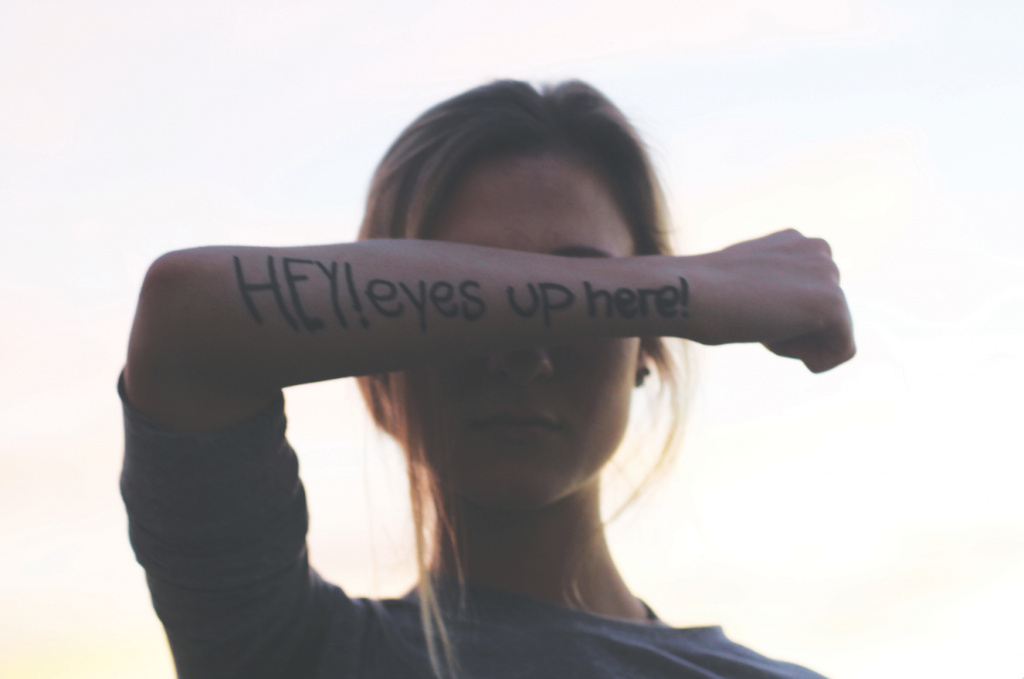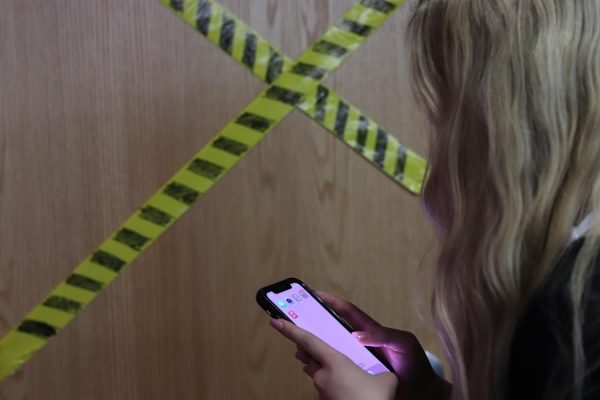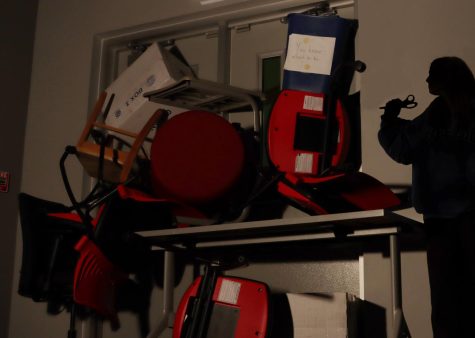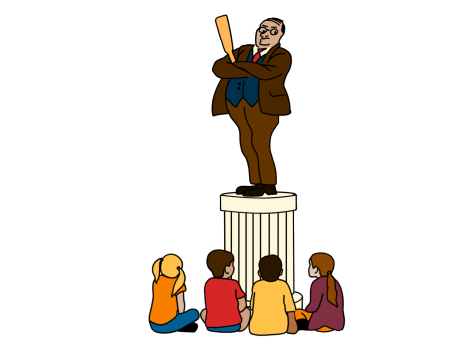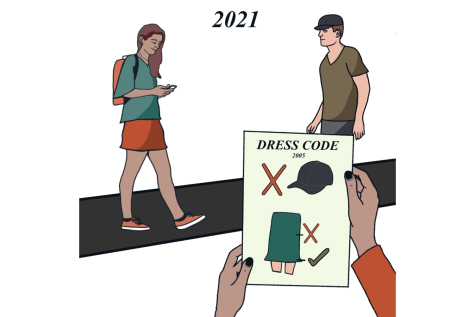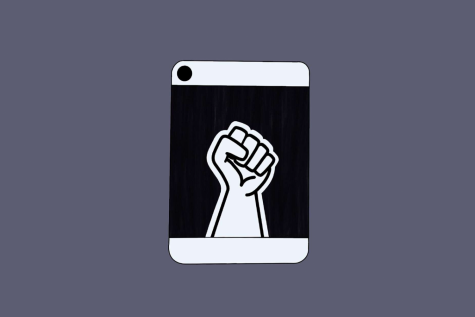Hands to yourself… and words too
This issue, The Kirkwood Call staff wanted to address a topic more serious and misunderstood than homecoming, more invasive and scary than the dress code and certainly more taboo than the locked doors: sexual harassment. Staff and students alike (41% of students we surveyed) have seen harassment at KHS, and with our news filled with word of a “rape epidemic” it becomes apparent that we cannot avoid it forever.
What is it?
“During homeroom this guy stopped me in the hallway and looked me up and down and said ‘Damn, you are the thickest white girl I have ever seen’ and then continued to make other comments about my physique,” one student said. “Almost all the girls I’ve talked to said they’ve had some sort of experience like it.”
“Sexual harassment,” according to Merriam Webster Dictionary, is any “uninvited and unwelcome verbal or physical behavior of a sexual nature especially by a person in authority toward a subordinate.”
Many of us say to ourselves “Oh, I would never do that.” We tell ourselves that we’re above this issue, that we don’t have an active role in it, when we really do. Physical harassment? We already know that’s wrong. That’s rape, but it’s also grabbing someone’s butt or hugging someone even when they say no, which 41 percent of us have seen here at KHS.
It doesn’t just end there: verbal abuse is cat calling, whistling and lewd comments, but it’s also “women in the kitchen” jokes, prison rape jokes, slut shaming (embarrassing a girl for expressing her sexuality and/or the way she dresses) and even the seemingly harmless bashing of the “friend-zone” where someone implies that another person owes them a relationship simply because they’re friends. Then there’s the ever prominent double standard: Guys are commended and praised for “hookups” while girls are humiliated and called sluts.
Sometimes sexual harassment turns into sexual assault, which happens more often than we would think.
According to RAINN, (the Rape, Abuse and Incest National Network), 4.2 million people are sexually assaulted a year which equates to one person every two minutes. These people are assaulted, harassed or even raped.
Rape is an ugly, terrible word, and one that we certainly don’t associate it with school, but it needs to be talked about.
Victim blaming
In January 2012, 14-year-old Daisy Coleman and her friend Paige from northwest Missouri were allegedly raped by two high school boys. After the attack, the girls were threatened and Daisy’s mother, Melinda Coleman, lost her job as a veterinarian. The only charges against the two boys were dropped after one of the boys’ grandfathers was discovered to be a former state representative. Daisy spiraled into depression and was repeatedly hospitalized for being suicidal.
This unapologetic attack on Daisy and her family by the community is a textbook example of victim blaming. Victim blaming is when we refuse to believe anyone could be capable of doing something so horrible, so we decide to blame the girl who wears yoga pants or short-shorts instead of the nice kid in our fifth hour math class.
What happened to Daisy’s family seems unimaginable, but it stems directly from a misunderstanding of the topic: an entirely expected misunderstanding when we consider how little we really talk about these permeating issues.
We judge people and “blame the victim” frequently. As a society, we focus so much on women’s duty to please men. Conversely, women are told to avoid dressing provocatively to keep themselves from getting raped instead of telling men to, well, not rape.
Guys mean it as complimentary, but knowing what is and isn’t appropriate to say to someone and what is or isn’t appropriate context is important.
— KHS senior
Solving the problem
This doesn’t mean there aren’t conscious efforts to combat this issue–there are a plethora of projects and victim outreach programs speaking out to see this problem through to the end. Twitter trends like #JusticeForDaisy in the case of the Colemans bring activists together and incite action like the rally held in Marysville, Missouri, Oct. 23 for Daisy.
It’s easy to feel hopeless in the face of this seemingly endless problem. There’s so much that’s ingrained into our culture that seems impossible to set right. However, the easiest way to combat sexual harassment is just to speak up. Too often girls and especially guys feel like they can’t discuss their issues with sexual harassment because of their fear of social backlash. When stories like the Colemans’ frequent the news, it’s no wonder people are afraid to say what they think, but it’s time more people did. It’s also time that we as students make the conscious decision to help and listen to our classmates. As the community of Kirkwood continues to grow, so should our compassion and willingness to help.
The first step is avoiding making lewd comments with words like “slut” and disrespectful or objectifying jokes. From there, hopefully those who feel compelled to whistle or make comments in the hallways will realize how that kind of behavior can really hurt someone else.
“In class I turned around and saw two guys looking at me and making the hourglass shape with their hands,” a senior girl said. “Guys mean it as complimentary, but knowing what is and isn’t appropriate to say to someone and what is or isn’t appropriate context is important.”
The next step is to take action. When the inevitable happens and some kid in the hallway whistles at someone else, let him know how humiliating that is to experience. When a girl at lunch starts making lewd comments about her lab partner, let her know how her words could affect him.
Any form of sexual harassment or assault is definitely wrong, but it’s plaguing our culture. The only way we’re going to fix this in Kirkwood is by taking a closer look at ourselves and the ways we interact with our peers. By taking an active position in our school community, we can build a happier, healthier place to learn and grow as people.
Sexual harassment talks its way into KHS
Domestic violence: what we know
Your donation will support the student journalists of Kirkwood High School. Your contribution will allow us to purchase equipment and cover our annual website hosting costs.

Grade: 12
Hobbies: Netflix, babysitting, biking, graphic design, gluten-free eating, listening to Taylor Swift and photography.
Extra Curriculars:...


